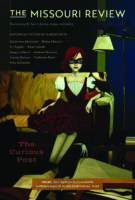Reviews | June 19, 2020
Review: Marching On: Rereading Little Women and Louisa May Alcott
Stephanie Carpenter
I read Little Women for the first time in elementary school.
If you are a student, faculty member, or staff member at an institution whose library subscribes to Project Muse, you can read this piece and the full archives of the Missouri Review for free. Check this list to see if your library is a Project Muse subscriber.
Want to read more?
Subscribe TodaySEE THE ISSUE
SUGGESTED CONTENT

Features
Apr 16 2024
Love and Work: Three Biographies of Artistic Power Couples
Love and Work: Three Biographies of Artistic Power Couples Her Husband: Hughes and Plath–A Marriage, by Diane Middlebrook. Viking, 2003, 361 pp., $25.95 (hardcover) Truly, Madly: Vivien Leigh, Laurence Olivier,… read more

Features
Jan 04 2024
Writing about Mom and Dad: Four Literary Memoirs of Parents
Writing about Mom and Dad: Four Literary Memoirs of Parents Cynthia Miller Coffel Also A Poet: Frank O’Hara, my father, and me by Ada Calhoun. Random House, 2022, 259… read more

Features
Oct 04 2023
Whose Life Is It, Anyway? Lives of the Poets and the Evolving Art of Biography
Whose Life Is It, Anyway?: Lives of the Poets and the Evolving Art of Biography Andrew Mulvania The art of biography, we say—but at once go on to ask,… read more

